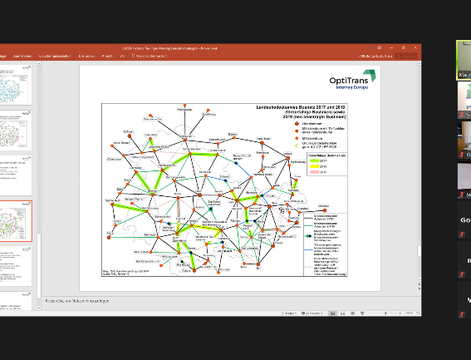
OptiTrans meeting: monitoring the action plans
The OptiTrans partners assembled for an online meeting to exchange on the progress of the action plans. The policy learning phase has sincerley influenced ongoi...
Accross Europe transport accounts for about 20 per cent of all greenhouse gas emissions. Nearly half of them are related to passenger transport. To reduce the carbon footprint of mobility, public transport especially in rural and suburban areashas to be strengthened and bottlenecks in public transport networks have to be reduced.
Currently a number of remarkable new trends and developments characterize the transport marked. For the public transport system, this creates unique opportunities for a change in the choice of transport and to strengthen its marked position.
Those include
€1,358,785.00
Low-carbon economy
Through improved policies, public transport Networks become more attractive, leading to more passengers and hence more financial means to stabilize and/or further expand public transport in rural and peri-urban regions.
Main benefits:
Thuringia's OP dedicates 20.2 per cent of available ERDF funding to the reduction of CO2 emissions, including the promotion of low-carbon mobility. The OP specifically mentions that inter-modal mobility chains should be established, aiming to address all mobility needs of residents. Other demonstration projects aim for the integration of rail travel and e-mobility (including car-sharing) especially with regard to tourists.
While the mentioned sub-measure only represents a small share of Thuringia's ERDF funds, the regional public authority aims to use the opportunity to implement highly innovative actions that can demonstrate an added value and lead to a larger scale roll-out financed by other public funds. Therefore, already the planning of demonstration projects shall take European good practices into account and be based on broad stakeholder involvement. By participating in OptiTrans, staff of the LP and stakeholders will be able to use available funds as efficiently as possible.
According to Romanian law of public transport, if a city and nearby towns want to organize metropolitan transportation, it is necessary to create a metropolitan association and delegate to it the competences related to public transport, such as:
-creating the metropolitan transport programme
-developing the strategy of public transport on long term
-delegate the transport public service to a metropolitan transport company, based on a contract
-monitoring and optimize the implementation of the metropolitan transport programme
In this respect, the Baia Mare Metropolitan Area Association was created in 2012, with the purpose of creating the metropolitan transportation system around Baia Mare City. During the year of 2013, the association prepared the process of extending the public service of transportation from the city level to metropolitan level, and also to transform the municipal company in a metropolitan public transport company by giving shares to nearby towns.From the year 2014 until now, the metropolitan company of transportation operate seven localities, respectively the Baia Mare City, two towns and four villages, with a total population around 200.000 inhabitants.
Future objectives are to increase the quality of service, to modernise the local transport infrastructure, to buy electrical buses, and to implement the e-ticketing system. These activities are meant to strengthen public transport's share in the modal split and hence reduce transport CO2 emissions.
The City of Zadar is responsible for the Local Strategy on Transport of the City of Zadar, which is also known as the Dalmatia Region Transport Strategy as it addresses the City of Zadar's own territory and that of 13 further smaller municipalities in its close vicinity. The strategy is momentarily focused on bus routes and must be revised in order to a) take account changing demographics especially in the rural communities surrounding Zadar, b) integrate tourism demands during the main vacation period, and c) integrate other forms of low-carbon transport such as cycling and e-mobility.
The Local Strategy on Transport of the City of Zadar links some of its priorities to the Croatian ERDF programme such as promoting sustainable transport and removing bottlenecks in key infrastructure networks; support for multimodal single European transport area by investing in the Trans-European Transport Network (TEN-T network); enhancing regional mobility through connecting secondary and tertiary nodes to TEN-T infrastructure; development of environmental and transport system with low carbon and the promotion of sustainable urban transport; the development of a comprehensive, interoperable and high-quality rail system.
The Transport Development of Tartu City is the main planning tool for the city's public transport system and its further expansion and amelioration. At present, the modal split of Tartu City is as follows: private cars 28%, public transport 27%, pedestrians 40%, cyclists 5%. The statistics of recent years show that the use of public transport is in slight decline in Tartu. By contrast, the use of private cars is increasing - especially for transport between the urban centre and the expanding city outskirts and surrounding municipalities (urban sprawl). This leads to congestions on major traffic routes and threatens Tartu's amibitions to reduce CO2 emissions within the city. The municipality therefore aims to work closely together with the municipalities in its surroundings to integrate residential areas located at the city's fringes in its Transport Development Plan.
Thessaly's ROP considers the region's location in the centre of Greece's mainland, its geomorphological elements, including and islands, and its transport infrastructure and accessibility in general is dominant elements in its strategy. It is closely linked to its strategic approach to better integrate the region to the country's trans-European networks, especially when they contribute greatly to the accessibility of the region. In addition, it is a particular development objective for the Thessaly region to link productive inland and island and / or tourist areas, with urban centers of the region and the trans-European networks, increasing the attractiveness and extroversion of the entire region, strengthening the business base and the spatial coherence. While the programme focuses on large infrastructure, the backbone public transport infrastructure within the region needs to be better addressed to make sure that better access to European and national transport networks is beneficial to the region's residents and their mobility needs.
The ROP of Abruzzo Region is closely linked to the Regional Integrated Transport Plan (PRIT) and is the main financing source for its implementation. Region of Abruzzo is by law responsible to organise and provide the essential services qualitatively and quantitatively to meet the citizens' demand for mobility. The main programming tool aimed at applying the mobility services (commuter services, access to health/cultural/social services, support integration of different transport networks, intermodality, cost-efficient mobility solutions) is the Regional Integrated Transport Plan (PRIT) which, on a 3-year basis, identifies measures for the organisation of local and regional public transport and sets objectives for the reduction of transport-related CO2 emissions. While investments are mainly financed through the ROP for Abruzzo region, the Regional Transport Fund finances public transport services' operation.
Abruzzo region's public transport is challenged by the geomorphical characteristics of the region (mountains 65%, hills 34% and only 1% level ground). Both population and industry are concentrated on the coast with internal regions, exacerbated by the 2009 earthquake's destruction in the L'Aquila area. The modal split of public transport in the entire Abruzzo region is only 17.5 per cent althrough 30 millions Euro were invested in new buses and rail routes during the 2007-2013 financial period. 6.8 millions Euro are available in the 2014-2020 financial period.
Andalusia's ROP foresees the promotion of cycling, investments in public transport platforms, further sustainable mobility plans and a better integration of different forms of low-carbon transport (integrated mobility chains). The program provides a good framework for local investments and enhanced planning. PP7 is a public consultancy tasked by its owner, the Provincial Council of Granada, to support all 172 municipalities of the province in sustainable energy promotion and thus, in sustainable mobility planning. This includes the elaboration of Sustainable Urban Mobility Plans and support the preparation of projects for which applications for ERDF funding from Andalusia's ROP are prepared. At present, funding decisions favors transport investments in Andalusia's major cities (Sevilla, Cordóba, Málaga, Granada) and only a small share of the funding is spent on sub-urban and rural mobility. Whereas public transport in the urban centers is already quite modern today, a lack of investment in low-carbon mobility outside the city centers results in a low overall modal split share of public transport as its attractiveness beyond short inner-city distances remains small. In turn, a better integration of sustainable mobility of sub-urban and rural areas can durably strengthen public transport and encourage more people to switch to low-carbon mobility. The Granada Energy Agency specifically works in working programs , related to promotion of sustainable mobility.

The OptiTrans partners assembled for an online meeting to exchange on the progress of the action plans. The policy learning phase has sincerley influenced ongoi...

OptiTrans stakeholder wins German Mobility Award

Baia Mare Metropolitan Area Association is implementing a Pilot Action “IT tool for monitoring the Public Service Contract for passenger public transport”.
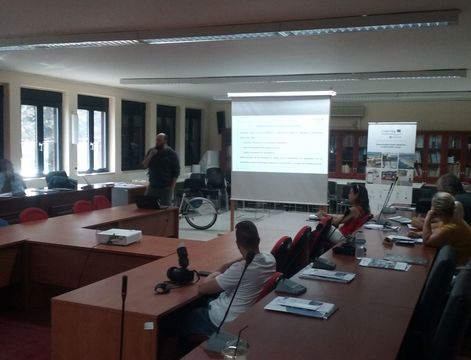
Presentation of OptiTrans project in SUMPORT event (INTERREG MED Programme)
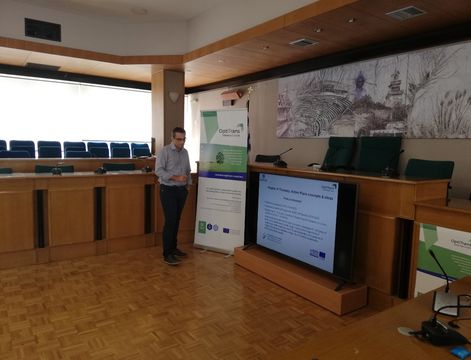
Peer Review and Partner Meeting in Thessaly, Greece, 9-12 July 2019
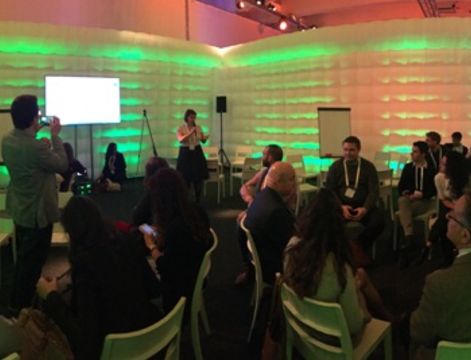
OptiTrans attended the interregional cooperation forum "Europe, let's cooperate"
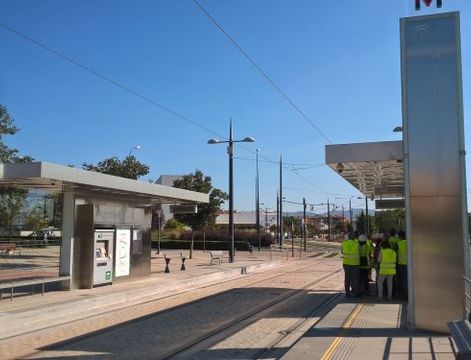
The Metropolitano de Granada, the transport system managed by the “Junta de Andalucía” (regional government of Andalusia), has transported almost 9.5 milli...
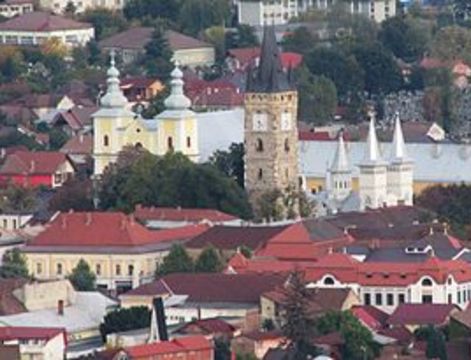
Local stakeholders exchanged on ambitious mobility projects for the Baia Mare Metropolitan Area (RO)
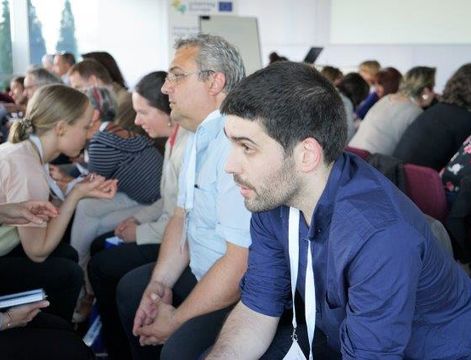
OptiTrans was part of the Interreg Europe Experience fair in Sofia
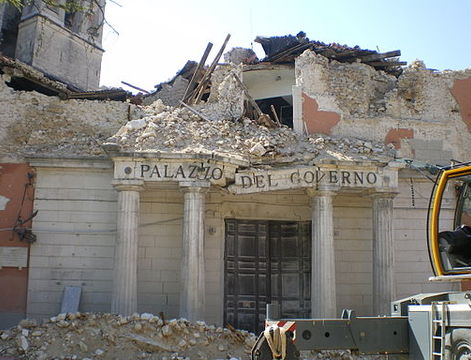
After the destructions of the 2009 earthquake, L'Aquila and its surroundings are in the course of reconstructing and reorganizing their PT